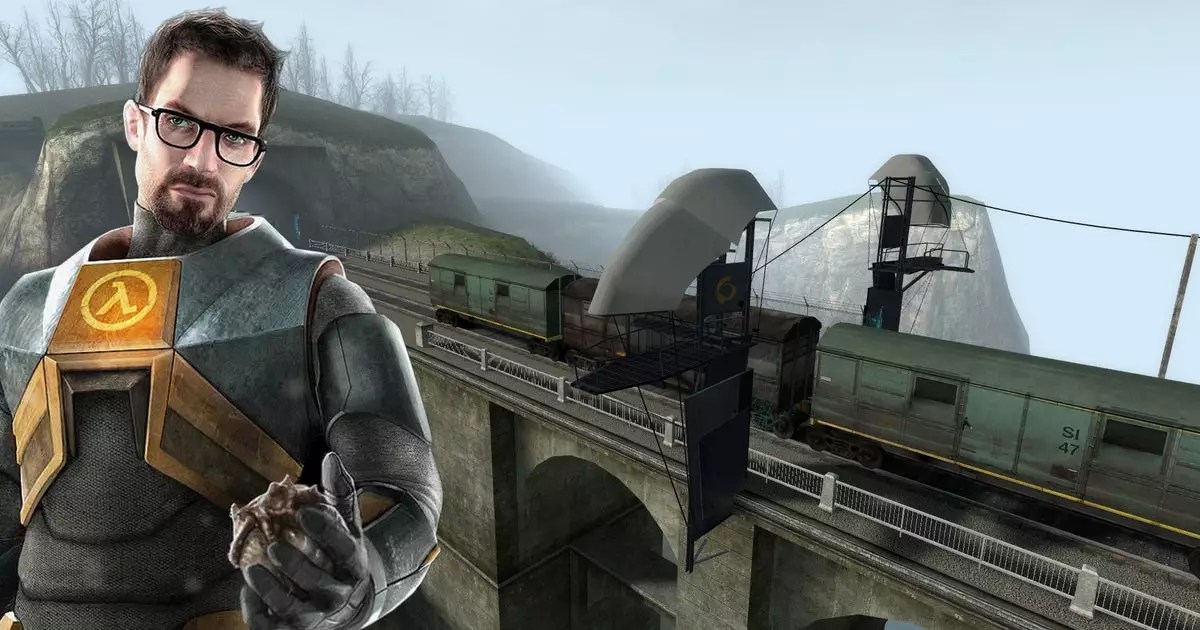In the world of gaming, there’s a rare kind of magic—one that bridges nostalgia, technical refinement, and player engagement. When developers revisit their classics years after release, it’s often viewed as a sentimental gesture, a kind of homage to dedicated fans. However, even minor updates, such as Valve’s recent tweak to Half-Life 2, reveal a much deeper truth: these small modifications can recalibrate our entire perception of a beloved game. They remind us that even after two decades, the experience of a game isn’t fixed in stone; it’s an evolving narrative shaped by ongoing effort and dedication. These revisions are not mere bug fixes, but subtle reinforcements of the game’s intricate design, offering players a refined, often more authentic journey.
The recent update’s primary highlight—restoring the train’s speed on “Highway 17”—might seem trivial at first glance. Yet beneath that surface lies a profound commentary on game difficulty and player agency. For nearly 20 years, players have been accustomed to reacting to the train as an unstoppable force, often resorting to tedious strategies like reversing just to avoid a seemingly inevitable death. By explicitly reinstating the original train speed, Valve essentially reopens the narrative of player mastery, asserting that players always had the power to challenge their in-game limits. It’s a subtle affirmation that mastery over game mechanics should never be resigned to chance or workaround; it is a skill that players can hone—and Valve’s update honors that.
Behind the Curtain: The Overlooked Significance of Minor Fixes
Beyond the locomotive adjustment, the update exemplifies how small corrections influence the game’s ecosystem. Fixations like NPCs shooting through walls or Alyx blocking the player’s path serve as more than technical fixes—they are acknowledgments of nuanced gameplay dynamics. While some might dismiss these as insignificant, each correction helps realign the game’s world with the player’s expectations of continuity and realism.
More intriguing is the role such updates play in preserving the game’s legacy. When Half-Life 2 was re-engineered for its 20th anniversary, it became evident that the game was still a work in progress, not just a static artifact frozen in time. The removal of invisible walls and collision tweaks reflect a striving toward authenticity—endeavors that keep the game relevant, accessible, and fun to both nostalgic veterans and new players. These updates serve as the digital equivalent of fine-tuning a vintage machine: minor adjustments that, over time, preserve the integrity and longevity of a complex piece of interactive art.
The Myth of the Perfectly Preserved Classic
There’s an undercurrent of humor—and perhaps a touch of melancholy—in imagining a lone developer’s daily ritual of patching up a 20-year-old game. Though likely exaggerated, it underscores a larger truth: maintaining a classic is an ongoing labor of love. Developers and fans alike recognize that these small acts of preservation do more than fix bugs; they reaffirm a shared cultural value. It’s an act of stewardship, ensuring that the game remains playable and relevant in a modern context.
This ongoing refinement prompts us to reconsider how we consume and interpret our games. Are we playing to beat a level, or are we engaging in a dialogue with history itself? Does a slight change in water collider or NPC hitbox alter the game’s narrative depth? Most assuredly, it does. Each fix lends new life to an old game, blurring the lines between the original design and modern expectations. That this process continues without fanfare or major marketing speaks volumes about the uncelebrated, yet vital, role of updates in preserving interactive art.
In the end, these seemingly insignificant patch notes remind us that gaming’s true power lies in its capacity for renewal. They are a testament to the idea that no game—no matter how old—should remain static. Instead, it thrives through continuous attention, driven by love, nostalgia, and a stubborn refusal to let go of history. And perhaps, most importantly, they confirm that even the smallest tweak can have a profound impact on how we connect with the games that shaped us.


Leave a Reply